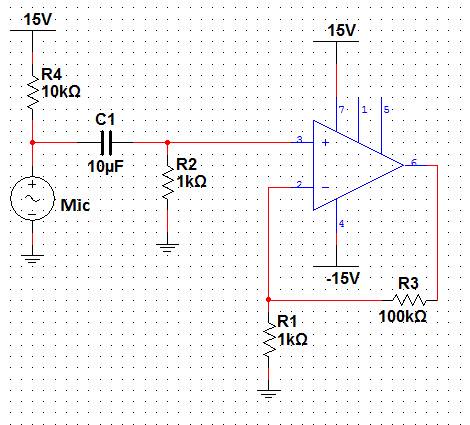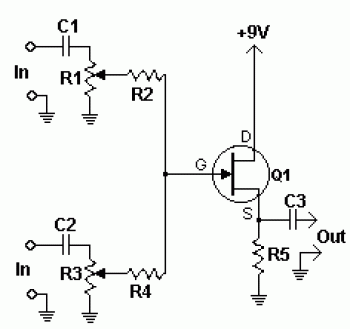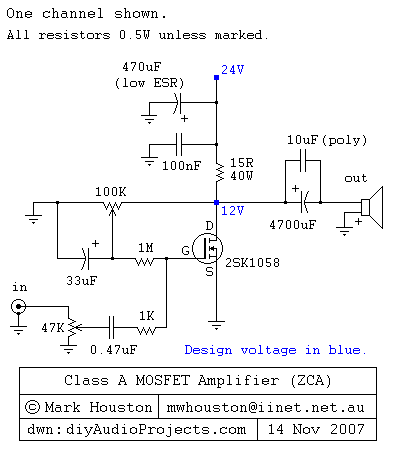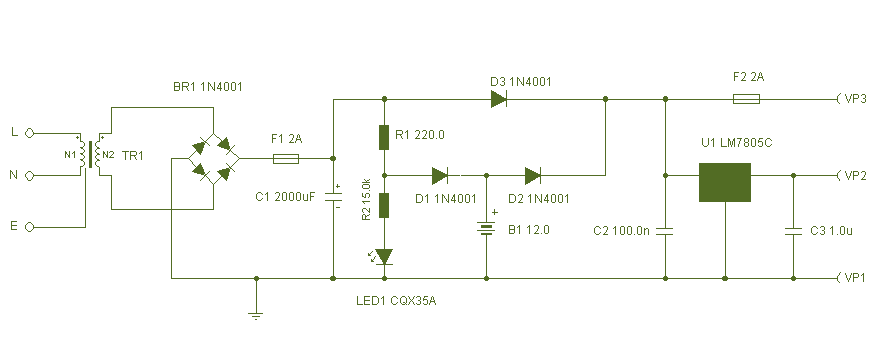
1.5W Audio power amplifier (12V)

Integrated circuits (ICs) have largely replaced traditional circuits like this one; however, this circuit is still utilized where the flexibility of a discrete device design is desirable. The components are readily available, and the issue of IC obsolescence is eliminated. The TIP31A transistor can be attached to a small metal heatsink if required.
This circuit design presents a discrete transistor amplifier configuration utilizing the TIP31A, a popular NPN power transistor. The TIP31A is capable of handling significant current and voltage, making it suitable for various applications, including signal amplification and switching. The flexibility of discrete components allows for tailored circuit designs that can be easily modified or repaired, a significant advantage over integrated circuits, which may become obsolete or difficult to source.
In this configuration, the TIP31A is typically arranged in a common emitter configuration, which provides a good balance between gain and output impedance. The input signal is fed into the base of the transistor through a biasing resistor, which sets the operating point of the transistor in its active region. Proper biasing is crucial to ensure linear operation and avoid distortion of the amplified signal.
The collector of the TIP31A is connected to the load, which can be a speaker, LED, or any other device requiring amplification. The emitter is usually connected to ground through an emitter resistor, which helps stabilize the gain and improve linearity by providing negative feedback. The circuit may also include coupling capacitors at the input and output to block DC voltage while allowing AC signals to pass through.
To manage heat dissipation, the TIP31A can be mounted on a small metal heatsink. This is particularly important when the transistor operates at high currents, as excessive heat can lead to thermal runaway and damage the device. The heatsink should be chosen based on the expected power dissipation and ambient temperature to maintain the transistor within its safe operating limits.
Overall, this discrete transistor amplifier circuit remains a valuable design for applications requiring flexibility, ease of sourcing components, and straightforward modifications.ICs have largely replaced circuits such as this, this circuit still finds use where the flexibility of a discrete device design is desirabe. Parts are easy to obtain and the problem of IC obsolescense is eliminated. The TIP31A can be heatsinked to a small metal heatsink, if desired. 🔗 External reference
This circuit design presents a discrete transistor amplifier configuration utilizing the TIP31A, a popular NPN power transistor. The TIP31A is capable of handling significant current and voltage, making it suitable for various applications, including signal amplification and switching. The flexibility of discrete components allows for tailored circuit designs that can be easily modified or repaired, a significant advantage over integrated circuits, which may become obsolete or difficult to source.
In this configuration, the TIP31A is typically arranged in a common emitter configuration, which provides a good balance between gain and output impedance. The input signal is fed into the base of the transistor through a biasing resistor, which sets the operating point of the transistor in its active region. Proper biasing is crucial to ensure linear operation and avoid distortion of the amplified signal.
The collector of the TIP31A is connected to the load, which can be a speaker, LED, or any other device requiring amplification. The emitter is usually connected to ground through an emitter resistor, which helps stabilize the gain and improve linearity by providing negative feedback. The circuit may also include coupling capacitors at the input and output to block DC voltage while allowing AC signals to pass through.
To manage heat dissipation, the TIP31A can be mounted on a small metal heatsink. This is particularly important when the transistor operates at high currents, as excessive heat can lead to thermal runaway and damage the device. The heatsink should be chosen based on the expected power dissipation and ambient temperature to maintain the transistor within its safe operating limits.
Overall, this discrete transistor amplifier circuit remains a valuable design for applications requiring flexibility, ease of sourcing components, and straightforward modifications.ICs have largely replaced circuits such as this, this circuit still finds use where the flexibility of a discrete device design is desirabe. Parts are easy to obtain and the problem of IC obsolescense is eliminated. The TIP31A can be heatsinked to a small metal heatsink, if desired. 🔗 External reference





